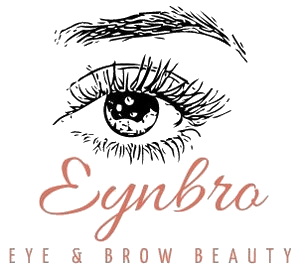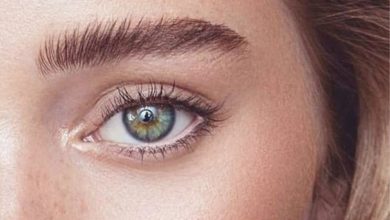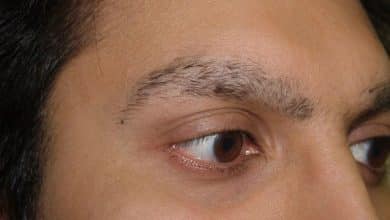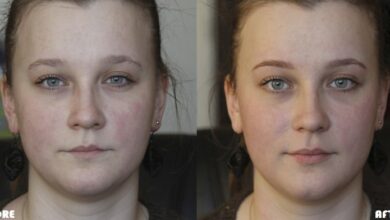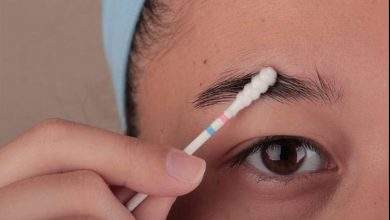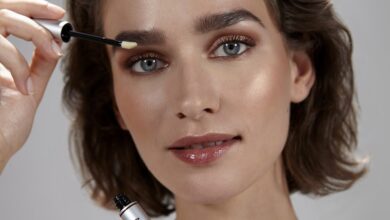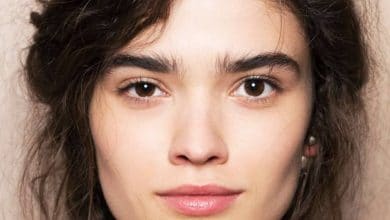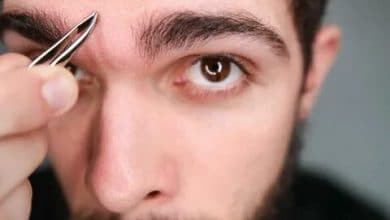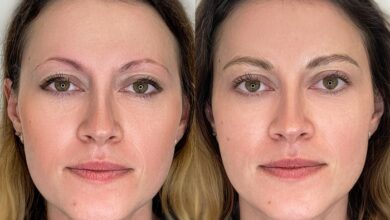When the eyebrow hair is shaved, burned, or waxed off, does it grow back?
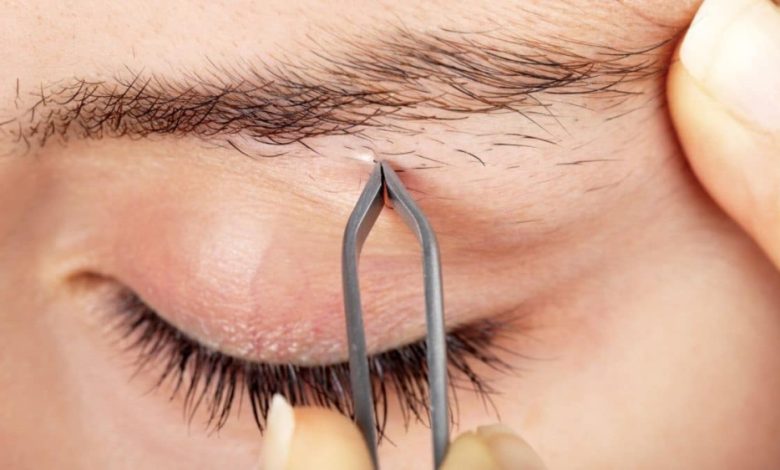
Beautifully shaped and well-defined eyebrows can enhance our facial features and overall appearance. However, sometimes we may inadvertently remove or damage eyebrow hair through shaving, burning, waxing, or over-plucking. The burning question is: Will the eyebrows grow back? In this comprehensive article, we delve into the fascinating world of eyebrow hair growth and explore various methods to promote faster and healthier regrowth. Whether you’ve experienced hair loss due to grooming mishaps or simply desire fuller eyebrows, read on to discover practical tips, natural remedies, and professional solutions to help you achieve the brows of your dreams.
Key Takeaways:
- Eyebrow hair typically grows back after being shaved, burned, waxed off, or over-plucked, although the regrowth process may vary in duration and effectiveness.
- Patience is key when it comes to regrowing eyebrows, as hair growth can take several weeks to months to achieve desired results.
- Nurturing the hair follicles through proper nutrition, avoiding further hair removal, and using eyebrow serums or natural remedies can help stimulate eyebrow hair growth.
- Consulting with a dermatologist or trichologist can provide personalized advice and treatment options for individuals experiencing significant hair loss or concerns about eyebrow hair growth.
Understanding Eyebrow Hair Growth
To comprehend how and if eyebrow hair grows back, it is essential to understand the hair growth cycle. Hair follicles go through three main phases: anagen (growth), catagen (transition), and telogen (resting). The anagen phase is when hair actively grows, and it typically lasts for several weeks to a few months. The catagen phase follows, during which the hair follicle shrinks, and hair growth stops. Finally, the telogen phase occurs, where the hair rests before shedding and being replaced by new hair.
Will Eyebrow Hair Grow Back?
Shaved, Burned, or Waxed Off Eyebrows
If you have shaved, burned, or waxed off your eyebrows, the good news is that the hair will usually grow back. These methods remove the visible hair shaft but do not damage the hair follicles responsible for producing new hair. With time, the hair follicles re-enter the anagen phase, and new eyebrow hair begins to grow. However, it’s important to note that the regrowth process may vary among individuals, and it can take several weeks to months for the eyebrows to fully grow back.
Over-Plucked Eyebrows
For those who have over-plucked their eyebrows, the regrowth process may take longer and be more challenging. Over-plucking can cause damage to the hair follicles, leading to thinning or even permanent hair loss in some cases. However, in the majority of instances, over-plucked eyebrows can recover and regrow with proper care and patience. It is crucial to avoid further plucking and give the hair follicles time to recover. Providing a conducive environment for regrowth is essential, and there are strategies to help stimulate eyebrow hair growth.
Ways to Promote Faster Eyebrow Hair Growth
While there are no foolproof methods to guarantee rapid eyebrow hair growth, several practices may help stimulate the process. Here are some strategies to consider:
2. Avoid Over-Plucking: To facilitate eyebrow hair regrowth, refrain from further plucking or removing hair from the affected areas. Give your eyebrows ample time to recover and allow the hair follicles to initiate the regrowth process.
3. Use Castor Oil: Castor oil is a popular natural remedy believed to promote hair growth. Apply a small amount of castor oil to your eyebrows using a clean cotton swab or mascara wand before bed. Leave it overnight and rinse off in the morning. Repeat this process regularly for potential benefits.
4. Try Eyebrow Serums: Numerous over-the-counter eyebrow serums are available that claim to enhance hair growth. These products often contain ingredients like peptides, biotin, and keratin,which are believed to nourish the hair follicles and promote eyebrow hair growth. Follow the instructions provided by the manufacturer and be consistent with the application for the best potential results.
5. Massage the Eyebrow Area: Gently massaging the eyebrow area can help stimulate blood circulation, which, in turn, may encourage hair growth. Use your fingertips to massage the eyebrows in circular motions for a few minutes each day.
6. Avoid Harsh Chemicals: When it comes to eyebrow maintenance, avoid harsh chemicals that could potentially damage the hair follicles. Be cautious of products containing strong ingredients or undergoing aggressive treatments that could hinder the regrowth process.
7. Consider Microblading or Eyebrow Transplants: In cases where eyebrow hair loss is severe or permanent, microblading or eyebrow transplants may be options to consider. Microblading involves a semi-permanent tattoo technique that creates the appearance of eyebrow hair. Eyebrow transplants, on the other hand, involve surgical procedures to transplant hair follicles from other areas of the body to the eyebrow region.
8. Consult a Dermatologist: If you have concerns about your eyebrow hair growth or experience significant hair loss, it’s advisable to consult a dermatologist or a trichologist. These professionals specialize in hair and scalp health and can provide personalized advice and treatment options based on your specific situation.
9. Lifestyle Factors: In addition to the aforementioned strategies, certain lifestyle factors can also influence eyebrow hair growth. These include managing stress levels, getting enough sleep, and avoiding excessive use of eyebrow products or harsh makeup removers. Maintaining a healthy lifestyle overall can contribute to the overall health of your hair follicles and promote optimal hair growth.
10. Natural Remedies: Apart from castor oil, there are several other natural remedies that people believe can promote eyebrow hair growth. Some of these include aloe vera gel, coconut oil, olive oil, and onion juice. While scientific evidence supporting their effectiveness is limited, many individuals have reported positive results. If you choose to try natural remedies, it’s important to do a patch test to check for any allergic reactions and discontinue use if you experience any adverse effects.
11. Eyebrow Enhancing Makeup: While the primary focus is on promoting natural hair growth, using eyebrow enhancing makeup can help create the illusion of fuller brows in the meantime. Eyebrow pencils, powders, and gels can be used to fill in sparse areas and shape the eyebrows to achieve a desired look.
12. Importance of Patience: It’s crucial to remember that hair growth takes time, and results may not be immediate. Consistency and patience are key when it comes to regrowing eyebrows. Avoid becoming discouraged if you don’t see immediate changes and continue implementing the recommended strategies consistently for the best chance of success.
13. Professional Treatments: In some cases, individuals may opt for professional treatments to address eyebrow hair loss or sparse eyebrows. These treatments can include eyebrow extensions, eyebrow tattooing, or microblading. It’s important to thoroughly research and choose a reputable professional to ensure safe and satisfactory results.
14 Seeking Medical Advice: If you’ve tried various strategies to promote eyebrow hair growth without success, it may be beneficial to consult with a healthcare professional or dermatologist. They can assess your specific situation, rule out any underlying medical conditions that may be causing hair loss, and provide appropriate guidance and treatment options.
Please note that while these answers are based on general knowledge and research, individual experiences may vary. If you have specific concerns about your eyebrow hair growth or any underlying conditions, it’s always best to consult with a healthcare professional or dermatologist for personalized advice and guidance.
FAQ – Frequently Asked Questions
1. How long does it take for eyebrow hair to grow back after shaving or waxing?
The regrowth time for eyebrow hair after shaving or waxing can vary from person to person. On average, it can take anywhere from 4 to 8 weeks for the hair to start growing back. However, it’s important to note that complete regrowth may take longer, often several months, for the eyebrows to regain their full thickness. During this time, it’s recommended to avoid further hair removal and provide a nurturing environment for the hair follicles to initiate the regrowth process. Patience is key, as everyone’s hair growth rate and cycle are unique.
2. Can eyebrow hair grow back if it was burned off accidentally?
Accidental burning of eyebrow hair can be distressing, but the good news is that there is a chance for regrowth. The ability for the hair to grow back depends on the severity of the burn and the extent of damage to the hair follicles. Superficial burns that do not penetrate the hair follicles completely have a higher likelihood of regrowth. However, if the burn is more severe and damages the hair follicles extensively, regrowth may be limited or even impossible. It’s important to seek medical attention for severe burns and follow proper wound care protocols to optimize the chances of regrowth.
3. Is over-plucked eyebrow hair loss permanent?
Over-plucked eyebrow hair loss is not always permanent. In most cases, the hair follicles are not permanently damaged, allowing the eyebrows to eventually regrow. However, the regrowth process may take longer and require patience and proper care. It’s crucial to refrain from further plucking and give the hair follicles time to recover. Additionally, implementing strategies such as using eyebrow serums, natural remedies, and maintaining a healthy lifestyle can help stimulate the regrowth process. Consistency is key, as it may take several months for the eyebrows to fully recover and regain their natural thickness.
4. Are there any specific vitamins or supplements that can promote eyebrow hair growth?
While there is no magic pill for instant eyebrow hair growth, certain vitamins and supplements are believed to support overall hair health, including eyebrow hair. Biotin, also known as vitamin B7, is often recommended for its potential benefits in strengthening hair follicles. Other vitamins and minerals that may contribute to healthy hair growth include vitamin E, vitamin C, iron, and zinc. It’s important to note that individual results may vary, and it’s always best to consult with a healthcare professional or dermatologist before starting any new supplements to ensure they are suitable for your specific needs.
5. Can using eyebrow pencils or powders hinder eyebrow hair growth?
Using eyebrow pencils or powders for grooming and shaping your eyebrows should not hinder hair growth when used properly. These cosmetic products are designed to be applied to the surface of the skin and do not penetrate the hair follicles. However, it’s essential to be gentle when applying and removing these products to avoid any potential damage to the existing eyebrow hairs. Additionally, opting for high-quality products and removing them with gentle cleansers can help maintain a healthy environment for hair growth.
6. Is microblading a permanent solution for sparse eyebrows?
Microblading is a semi-permanent solution for sparse eyebrows. It involves using a hand-held tool with micro-needles to deposit pigment into the superficial layers of the skin, creating the appearance of eyebrow hair strokes. While microblading can last for up to two years, the results gradually fade over time as the pigment breaks down. Factors such as skin type, lifestyle, and aftercare practices can influence the longevity of microblading. It’s important to note that the effects of microblading vary from person to person, and it may require touch-ups or additional sessions to maintain the desired look. It’s crucial to choose a skilled and experienced professional who follows proper hygiene and safety protocols when undergoing microblading. Additionally, it’s essential to follow the aftercare instructions provided by the technician to ensure proper healing and longevity of the microbladed eyebrows.
7. Can stress affect eyebrow hair growth?
Stress can potentially impact hair growth, including eyebrow hair. When the body is under stress, it can disrupt the normal hair growth cycle, leading to increased shedding or slower regrowth. This can result in thinning eyebrows or slower eyebrow hair growth. It’s important to manage stress through various techniques such as regular exercise, mindfulness practices, getting enough sleep, and seeking support from friends, family, or professionals. By reducing stress levels, you can support the overall health of your hair follicles, including those in the eyebrows.
8. Are there any risks associated with eyebrow transplants?
Eyebrow transplants, a surgical procedure that involves transplanting hair follicles from other parts of the body to the eyebrow region, carry certain risks. As with any surgical procedure, there is a risk of infection, bleeding, scarring, or adverse reactions to anesthesia. It’s important to choose a qualified and experienced surgeon to minimize these risks. Additionally, there may be a risk of the transplanted hair not matching the texture or growth pattern of the existing eyebrow hair, which can result in an unnatural appearance. It’s crucial to have a thorough consultation with a qualified professional to discuss the potential risks and benefits of eyebrow transplants before making a decision.
9. Can hormonal changes affect eyebrow hair growth?
Hormonal changes can indeed influence eyebrow hair growth. Fluctuations in hormone levels, such as those experienced during pregnancy, menopause, or certain medical conditions, can disrupt the hair growth cycle. This can lead to temporary changes in eyebrow hair density or even hair loss. Once hormone levels stabilize, the hair growth cycle typically returns to normal, and eyebrow hair regrowth can occur. If you’re experiencing significant changes in eyebrow hair growth due to hormonal factors, it’s advisable to consult with a healthcare professional or dermatologist to address any underlying hormonal imbalances or medical conditions that may be contributing to the issue.
10. Can wearing eyebrow makeup every day affect eyebrow hair growth?
Wearing eyebrow makeup regularly should not directly affect eyebrow hair growth. However, improper use or excessive manipulation of the eyebrows while applying or removing makeup can potentially cause damage to the hair follicles. It’s important to be gentle when applying and removing eyebrow makeup, avoiding harsh rubbing or pulling that could lead to hair breakage or follicle damage. Additionally, ensuring that the products you use are of high quality and non-irritating can help maintain a healthy environment for hair growth. If you notice any adverse effects or changes in eyebrow hair growth, it’s advisable to take a break from wearing eyebrow makeup and consult with a professional for guidance.
Conclusion
In the quest for perfectly shaped eyebrows, accidents happen, and sometimes we may lose more hair than intended. However, the good news is that in most cases, eyebrow hair does grow back. By implementing the strategies mentioned in this article, such as nourishing the hair follicles, avoiding harsh treatments, and seeking professional guidance when needed, you can support the regrowth process and enjoy fuller, more defined eyebrows over time.
Remember, regrowing eyebrows requires patience and consistency. While there are no instant remedies, the journey toward achieving your desired eyebrow look can be rewarding. Embrace your natural beauty, take care of your eyebrows, and enjoy the process of nurturing them back to their full potential. With dedication and the right approach, you can regain the confidence that comes with beautifully shaped eyebrows.
